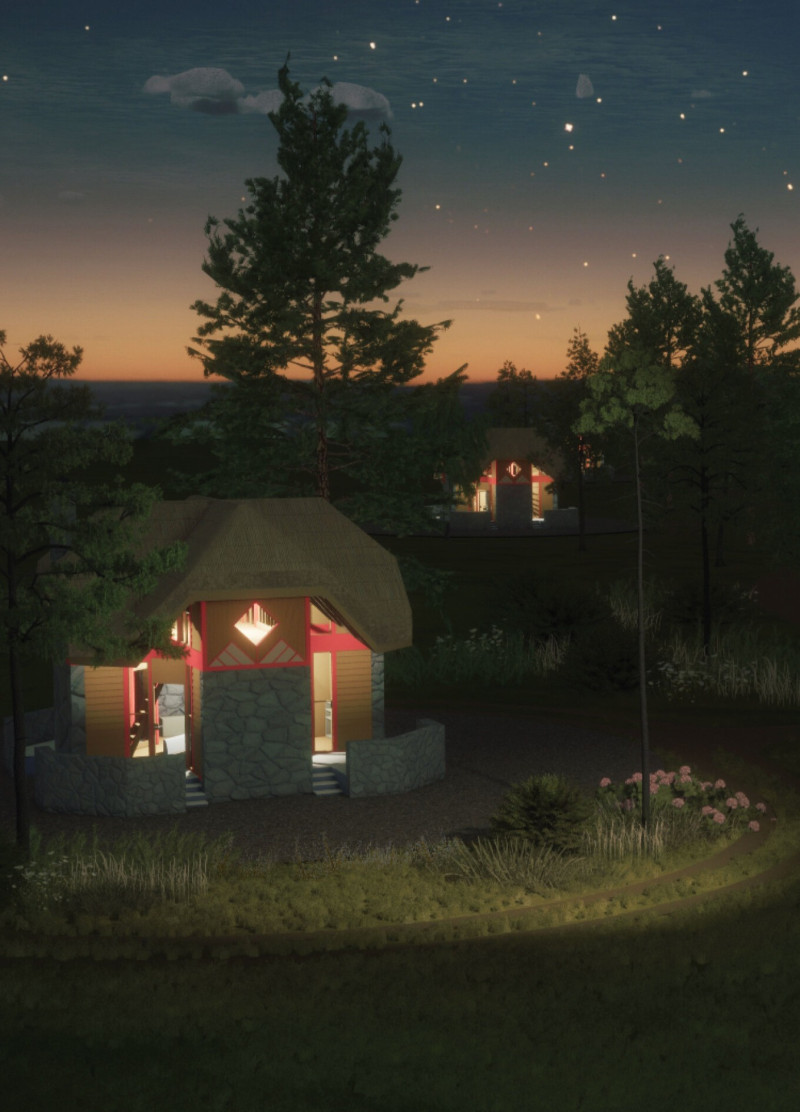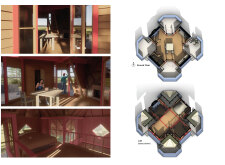5 key facts about this project
Caramel Shores Cabins in the Round offers a modern take on rural Latvian architecture, located near Skrunda. The design aims to connect visitors with the natural surroundings while providing comfortable accommodations throughout the year. By combining contemporary elements with traditional architectural features, the cabins create open views and interact closely with the landscape.
Architectural Concept
The design takes cues from traditional Latvian forms while moving away from typical styles to enhance visibility and accessibility. Each cabin is positioned to strengthen the bond with the surrounding environment, utilizing large windows to create a smooth transition between indoor and outdoor spaces. The careful design allows users to appreciate the changing light conditions and seasons, enriching their experience in the area.
Material Selection
Choosing materials for the cabins is a key aspect of the design, focusing on sustainability. The project incorporates stonework, local timber, and thatch, all chosen to minimize environmental impact by sourcing materials nearby. This approach not only supports the local economy but also allows the cabins to blend naturally into their setting. The use of these materials highlights a tangible connection between the interiors and the rural landscape.
Spatial Organization
The layout promotes both community and private spaces. The design encourages interaction among guests while ensuring places for individual retreat. Shared outdoor areas invite users to connect with nature and each other, enhancing the overall experience. This balancing act between solitude and social interaction enriches the stay for visitors.
As light filters through the large windows, it creates shifting patterns inside the cabins. These changes highlight the textures of the materials and the design details, encouraging occupants to notice the subtleties of their environment throughout the day.






















































